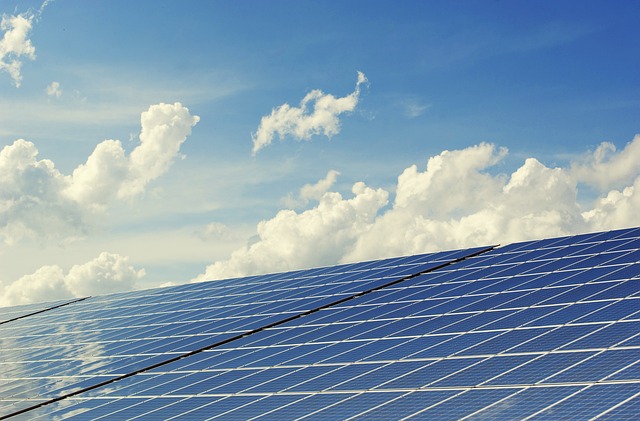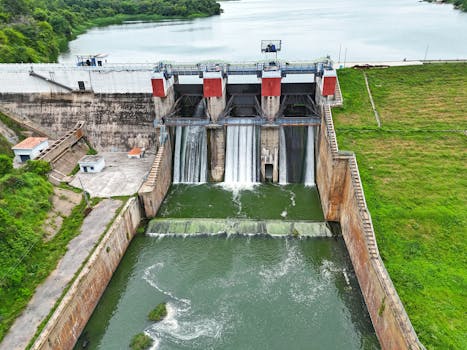“Empower Your Garden: Master the Art of Wiring a Solar-Powered Irrigation System!”
Wiring a solar-powered irrigation system involves integrating solar panels, a charge controller, batteries, and irrigation components to create an efficient and sustainable watering solution for gardens and agricultural fields. This system harnesses solar energy to power pumps and timers, reducing reliance on traditional electricity sources and minimizing operational costs. Proper wiring ensures that all components work harmoniously, providing reliable irrigation while maximizing energy efficiency. In this guide, we will outline the essential steps and considerations for wiring a solar-powered irrigation system, enabling you to set up a self-sufficient watering solution that benefits both your plants and the environment.
Choosing The Right Solar Panels For Your Irrigation System
When embarking on the journey of setting up a solar-powered irrigation system, one of the most critical decisions you will face is choosing the right solar panels. The efficiency and effectiveness of your irrigation system largely depend on the quality and suitability of the solar panels you select. To begin with, it is essential to understand the different types of solar panels available on the market. The two most common types are monocrystalline and polycrystalline panels. Monocrystalline panels are known for their high efficiency and space-saving design, making them an excellent choice for smaller areas where maximizing energy output is crucial. On the other hand, polycrystalline panels are generally more affordable and can be a suitable option for larger installations where space is less of a concern.
Once you have a grasp of the types of solar panels, the next step is to consider the power requirements of your irrigation system. This involves calculating the total wattage needed to operate your pumps and any additional components, such as timers or sensors. By determining the wattage requirements, you can then match them with the output specifications of the solar panels you are considering. It is advisable to choose panels that not only meet your current needs but also allow for future expansion. This foresight can save you time and money down the line, as you won’t need to replace or add panels later.
In addition to power output, the efficiency rating of the solar panels is another crucial factor to consider. The efficiency rating indicates how well a panel converts sunlight into usable electricity. Higher efficiency panels can generate more power in less space, which is particularly beneficial if you have limited installation area. However, it is essential to balance efficiency with cost, as higher-rated panels often come with a premium price tag. Therefore, evaluating your budget alongside your energy needs will help you make an informed decision.
Moreover, the durability and warranty of the solar panels should not be overlooked. Since solar panels are an investment, it is vital to choose products that are built to withstand various weather conditions and have a long lifespan. Most reputable manufacturers offer warranties ranging from 10 to 25 years, which can provide peace of mind regarding the longevity of your investment. Additionally, researching customer reviews and performance ratings can offer insights into the reliability of specific brands and models.
As you narrow down your options, it is also beneficial to consider the installation process. Some solar panels are designed for easy installation, while others may require professional assistance. If you are planning a DIY project, opting for panels that come with comprehensive installation guides and support can be advantageous. Conversely, if you prefer a hassle-free setup, hiring a professional installer may be the best route to ensure everything is done correctly.
Finally, it is essential to think about the environmental impact of your choices. Selecting solar panels that are manufactured using sustainable practices can contribute to a greener planet. By choosing high-quality, efficient solar panels for your irrigation system, you not only enhance its performance but also promote sustainability in agriculture. In conclusion, the right solar panels can significantly influence the success of your solar-powered irrigation system, making it imperative to carefully evaluate your options based on efficiency, durability, power requirements, and environmental considerations.
Wiring The Solar Power System: A Step-By-Step Guide

Wiring a solar-powered irrigation system is a crucial step in ensuring that your garden or agricultural land receives the necessary water supply while harnessing renewable energy. To begin with, it is essential to gather all the necessary components, including solar panels, a charge controller, batteries, an inverter, and the irrigation system itself. Each of these components plays a vital role in the overall functionality of the system, and understanding their interconnections will facilitate a smoother installation process.
First, you should determine the optimal location for your solar panels. Ideally, they should be placed in an area that receives maximum sunlight throughout the day, free from obstructions such as trees or buildings. Once you have identified the location, securely mount the solar panels using appropriate brackets. It is important to ensure that they are angled correctly to capture sunlight efficiently. After mounting, the next step involves connecting the solar panels to the charge controller. This device regulates the voltage and current coming from the solar panels to prevent overcharging the batteries.
To connect the solar panels to the charge controller, use appropriate gauge wires, typically 10 to 12 AWG, to handle the current safely. Begin by connecting the positive terminal of the solar panel to the positive input terminal of the charge controller, followed by the negative terminal to the negative input terminal. It is crucial to double-check these connections to avoid any potential short circuits. Once the solar panels are connected, you can proceed to connect the batteries to the charge controller. The batteries store energy generated by the solar panels, ensuring that your irrigation system can operate even during cloudy days or at night.
When wiring the batteries, it is essential to connect them in parallel to maintain the same voltage while increasing the capacity. Connect the positive terminal of the first battery to the positive terminal of the second battery, and repeat this for any additional batteries. After completing the parallel connections, connect the positive terminal of the battery bank to the positive output terminal of the charge controller, and the negative terminal to the negative output terminal. This setup allows the charge controller to manage the energy flow to and from the batteries effectively.
Next, you will need to connect the inverter to the battery bank. The inverter converts the stored DC power from the batteries into AC power, which is typically required for most irrigation systems. Connect the positive terminal of the inverter to the positive terminal of the battery bank and the negative terminal of the inverter to the negative terminal of the battery bank. Ensure that all connections are secure and insulated to prevent any electrical hazards.
Once the inverter is connected, you can wire the irrigation system to the inverter. Depending on your irrigation setup, this may involve connecting pumps, timers, or other control devices. It is advisable to consult the specific wiring diagrams provided by the manufacturers of your irrigation components to ensure compatibility and proper functionality. After all connections are made, conduct a thorough inspection of the entire system, checking for any loose wires or potential short circuits.
Finally, once you are confident that everything is wired correctly, you can power on the system. Monitor the performance of the solar-powered irrigation system closely during the initial days of operation to ensure that it functions as intended. By following these steps meticulously, you will have successfully wired a solar-powered irrigation system that not only conserves energy but also promotes sustainable agricultural practices.
Connecting The Irrigation Components To The Solar Power Source
Connecting the irrigation components to the solar power source is a crucial step in establishing an efficient solar-powered irrigation system. This process not only ensures that your irrigation system operates effectively but also maximizes the benefits of using renewable energy. To begin, it is essential to gather all necessary components, including solar panels, a charge controller, batteries, and the irrigation system itself, which may consist of pumps, valves, and timers. Each of these components plays a vital role in the overall functionality of the system, and understanding how they interconnect will facilitate a smoother installation process.
First, the solar panels must be positioned in an area that receives ample sunlight throughout the day. This positioning is critical, as the efficiency of the solar panels directly impacts the amount of energy generated. Once the panels are securely mounted, the next step involves connecting them to the charge controller. The charge controller is an essential component that regulates the voltage and current coming from the solar panels, ensuring that the batteries are charged safely and efficiently. To connect the solar panels to the charge controller, use appropriate gauge wiring, typically specified in the solar panel’s installation manual. It is important to follow the manufacturer’s guidelines to prevent any potential damage to the components.
After establishing the connection between the solar panels and the charge controller, the next step is to connect the batteries. Batteries serve as the energy storage system, allowing the irrigation system to operate even when sunlight is not available, such as during cloudy days or at night. When connecting the batteries, ensure that they are wired in accordance with the charge controller’s specifications. This typically involves connecting the positive terminal of the battery to the positive output of the charge controller and the negative terminal to the negative output. It is crucial to use high-quality battery cables to minimize energy loss and ensure safety.
Once the batteries are connected, the next phase involves linking the charge controller to the irrigation components. This is where the actual irrigation system comes into play. Depending on the type of irrigation system being used—whether it is a drip system, sprinkler system, or another type—different wiring configurations may be required. For instance, if a pump is part of the irrigation system, it will need to be connected to the charge controller to receive power. This connection typically involves running wires from the pump to the designated output terminals on the charge controller. Again, it is essential to adhere to the manufacturer’s instructions regarding wire gauge and connections to ensure optimal performance.
In addition to connecting the pump, other components such as timers and valves may also need to be integrated into the system. Timers can be programmed to operate the irrigation system at specific intervals, conserving water and ensuring that plants receive adequate moisture. To connect these components, follow the wiring diagrams provided by the manufacturers, as they will outline the necessary connections and configurations.
Finally, after all components are connected, it is vital to conduct a thorough inspection of the entire system. Check for any loose connections, exposed wires, or potential hazards that could affect the performance of the solar-powered irrigation system. Once everything is securely in place, you can power on the system and monitor its operation. By following these steps, you will have successfully connected the irrigation components to the solar power source, paving the way for a sustainable and efficient irrigation solution that harnesses the power of the sun.
Troubleshooting Common Wiring Issues In Solar-Powered Irrigation Systems
When setting up a solar-powered irrigation system, ensuring that the wiring is correctly configured is crucial for optimal performance. However, even the most meticulously planned systems can encounter wiring issues that may disrupt functionality. Understanding how to troubleshoot these common problems can save time and resources, allowing for a more efficient irrigation process.
One of the first issues that may arise is a lack of power to the system. This can often be traced back to the solar panels themselves. If the panels are not receiving adequate sunlight due to shading from trees or buildings, they may not generate enough electricity. Therefore, it is essential to assess the location of the solar panels and ensure they are positioned to receive maximum sunlight throughout the day. Additionally, checking the connections between the solar panels and the charge controller is vital. Loose or corroded connections can impede the flow of electricity, leading to insufficient power for the irrigation system.
If the system is receiving power but the irrigation components are not functioning as expected, the next step is to examine the wiring connections between the charge controller, battery, and pump. It is important to verify that all connections are secure and that the wiring is appropriately sized for the system’s requirements. Undersized wiring can lead to voltage drops, which may prevent the pump from operating effectively. Furthermore, inspecting for any signs of damage, such as frayed wires or exposed conductors, is crucial. Damaged wiring can create short circuits, leading to system failure or even safety hazards.
Another common issue is the activation of the pump. If the pump does not turn on when it should, it may be due to a faulty relay or switch. Testing these components with a multimeter can help determine if they are functioning correctly. If a relay is not engaging, it may need to be replaced. Additionally, ensuring that the control system is programmed correctly is essential. Sometimes, the settings may inadvertently be adjusted, leading to unexpected behavior in the irrigation schedule.
Moreover, it is important to consider the battery’s health in a solar-powered irrigation system. A battery that is not holding a charge can lead to intermittent power supply issues. Regularly checking the battery’s voltage and ensuring it is within the recommended range can help identify potential problems early. If the battery shows signs of deterioration, such as swelling or leakage, it may be time for a replacement.
In some cases, the issue may not be with the wiring itself but rather with the components of the irrigation system. Clogged filters or malfunctioning emitters can create the illusion of a wiring problem when, in fact, the issue lies elsewhere. Therefore, routine maintenance of the entire system, including cleaning filters and checking for blockages, is essential for ensuring smooth operation.
In conclusion, troubleshooting common wiring issues in solar-powered irrigation systems requires a systematic approach. By carefully examining the solar panels, connections, control systems, and components, one can identify and resolve problems effectively. Regular maintenance and vigilance can prevent many issues from arising, ensuring that the irrigation system operates efficiently and reliably. With a well-functioning solar-powered irrigation system, users can enjoy the benefits of sustainable water management while minimizing their environmental impact.
Q&A
1. **Question:** What components are needed to wire a solar-powered irrigation system?
**Answer:** You will need solar panels, a charge controller, a battery, a DC pump, wiring (appropriate gauge), connectors, and possibly a timer or controller for the irrigation system.
2. **Question:** How do you connect the solar panels to the charge controller?
**Answer:** Connect the positive (+) terminal of the solar panel to the positive (+) terminal of the charge controller and the negative (-) terminal of the solar panel to the negative (-) terminal of the charge controller.
3. **Question:** How do you wire the battery to the charge controller?
**Answer:** Connect the positive (+) terminal of the battery to the positive (+) terminal of the charge controller and the negative (-) terminal of the battery to the negative (-) terminal of the charge controller.
4. **Question:** How do you connect the DC pump to the system?
**Answer:** Connect the positive (+) terminal of the DC pump to the output positive (+) terminal of the charge controller and the negative (-) terminal of the DC pump to the output negative (-) terminal of the charge controller.
Conclusion
To wire a solar-powered irrigation system, first, select appropriate solar panels, a charge controller, batteries, and a pump. Connect the solar panels to the charge controller, ensuring correct polarity. Then, connect the charge controller to the batteries for energy storage. Finally, wire the pump to the batteries, ensuring all connections are secure and weatherproof. Test the system to ensure proper functionality and adjust settings as needed for optimal performance. Proper installation and wiring will ensure an efficient and sustainable irrigation solution.




